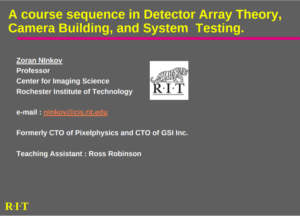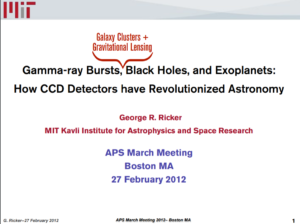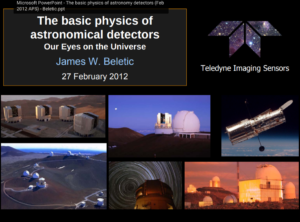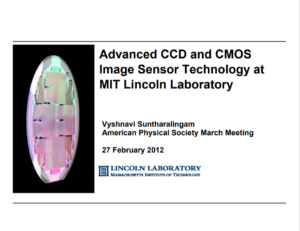Fresh perspectives on
- how the frontiers of astronomy affect physics
- how they might enrich undergraduate physics instruction.

Teach Better Physics Better
Fresh perspectives on
Modern astronomy and space science have brought us remarkable technologies and astonishing discoveries that excite and engage us all—teachers, students, and the general public. But it is physics that lets us explore and comprehend the cosmos and its unusual objects, and we need to help our students understand this physics. This theme issue shows how we might improve this process by using astronomy’s discoveries and technologies as contexts for teaching physics.
How can we use astronomy to teach physics? The articles in this issue suggest answers that are varied and interesting. Implicitly, they also raise some important questions. For one thing, how do you find a focus when there is such a dazzling wealth of material and such a vast range of possibilities? How do you bring your attention to bear on the underlying physics without being swept away by powerful images and narratives? For another thing, physicists need to know astronomy if they are going to use it to teach physics; for many of us this means learning new ideas, new vocabulary, and new ways to look at the Universe and its parts. It may also mean learning some new physics. Continue reading “AJP theme issue guest editorial: Use astronomy to teach physics”
EDITORIAL — Charles H. Holbrow and Peter Shaffer, Theme Issue Editors
CONTENTS
| Author(s) | Title |
| Jodi L. Christiansen & Andrew Siver | Computing accurate age and distance factors in cosmology |
| Colin S. Wallace and Edward E. Prather | Teaching physics with Hubble’s law and dark matter |
| Kevin Krisciunas, Erika DeBenedictus, Jeremy Steeger, Agnes Bischoff-Kim, Gil Tabak, & Kanika Pasricha | The First Three Rungs of the Cosmological Distance Ladder |
| Roy R. Gould, Susan Sunbury, & Ruth Krumhansl | Using online telescopes to explore exoplanets from the physics classroom |
| Gerald T. Ruch & Martin E. Johnston | A Robotic Observatory in the City |
| Benjamin Oostra | Measurement of the Earth’s Rotational Speed via Doppler Shift of Solar Absorption Lines |
| Hsiang-Wen Hsu & Mihaly Horanyi | Ballistic motion of dust particles in the Lunar Roving Vehicle dust trails |
| M. Kaan Ozturk | Trajectories of charged particles trapped in Earth’s magnetic field |
| A. R. P. Rau | Topics in quantum physics with origins in astronomy: Two examples |
| Jonathan M. Marr & Francis P. Wilkin | A Better Presentation of Planck’s Law Through Average Photon Energy and Spectral Energy Distributions |
| Ronald J. Adler | Cosmogenesis and the tipping pencil analogy |
| Davide Cenadelli, Marco Petenza, and Mauro Zeni | Stellar temperatures via Wien’s Law: Not so simple |
| Richard H. Price & Joseph D. Romano | In an expanding universe, what doesn’t expand? |
| Friedman | A Grand and Bold Thing, Ann Finkbeiner. 223 pp. Free Press, New York, 2010. Price $27.00 (cloth) ISBN 978-1-4165-5216-1 |
PROGRAM June 17-22, 2012
PHYSICS RESEARCH & EDUCATION GORDON RESEARCH CONFERENCE
SUNDAY |
2:00 pm – 8:00 pm Arrival and check-in
(Office Closed 6:00 pm – 7:00 pm)
6:00 pm – 7:15 pm Dinner
7:30 pm – 7:40 pm Welcome / Introductory Comments by GRC Site Staff
7:40 pm – 9:30 pm The Physics in Astronomy’s Discoveries and Technologies
Discussion Leader: Charles H. Holbrow (Colgate U / MIT)
7:40 pm – 8:20 pm Robert Kirshner (Harvard)
“The Energetic Universe”
8:20 pm – 8:35 pm Discussion
8:35 pm – 9:15 pm Noah Finkelstein (U Colorado)
“Evolve or Die: Challenges in Physics Education at a Critical Time”
9:15 pm – 9:30 pm Discussion
MONDAY |
7:30 am – 8:30 am Breakfast
9:00 am – 12:30 pm Exoplanets: New Worlds – How to find them; what they’re like
Discussion Leader: Sara Seager (MIT)
9:00 am – 9:40 am David Charbonneau (Harvard)
How the Hunt for Habitable Worlds with Kepler Can Inspire Students in Physics”
9:40 am – 10:00 am Discussion
10:00 am Coffee Break
10:30 am – 11:10 am Doug Caldwell (NASA-SETI)
“Finding and Understanding Exoplanets Using Undergraduate Physics”
11:10 am – 11:30 am Discussion
11:30 am – 12:10 pm Scott Gaudi (The Ohio State University)
“How to Conduct a Census of Exoplanets”
12:10 pm – 12:30 pm Discussion
12:30 pm Lunch
1:30 pm – 4:00 pm Free Time
4:00 pm – 6:00 pm Poster Session
6:00 pm Dinner
7:30 pm – 9:30 pm What is Being Done at Smaller Institutions
Discussion Leader: Mario Belloni (Davidson College)
7:30 pm – 7:50 pm Dan Reichart (UNC Chapel Hill)
“Project Intro Astro: Skynet Robotic Telescope-Based Labs for Majors
and Non-Majors”
7:50 pm – 8:00 pm Discussion
8:00 pm – 8:20 pm Larry Marschall (Gettysburg College)
“Astronomical Research in an Undergraduate Setting: Exploring the Real Sky at
Gettysburg College Observatory and the Virtual Sky through Project CLEA”
8:20 pm – 8:30 pm Discussion
8:30 pm – 8:50 pm Todd Timberlake (Berry College)
“Engaging with the History of Astronomy”
8:50 pm – 9:00 pm Discussion
9:00 pm – 9:20 pm Wolfgang Christian (Davidson College)
“ComPADRE Digital Library Resources for Teaching Astronomy.”
9:20 pm – 9:30 pm Discussion
TUESDAY |
7:30 am – 8:30 am Breakfast
9:00 am – 12:30 pm Observational Cosmology: New Horizons
Discussion Leader: Robert Kirshner (Harvard)
9:00 am – 9:40 am Tony Tyson (U C Davis)
“Imaging the Invisible: Optical Instrumentation for Cosmology”
9:40 am – 10:00 am Discussion
10:00 am Coffee Break
10:30 am – 11:10 am Chris Stubbs (Harvard)
“Why has the discovery of dark energy precipitated a crisis
in fundamental physics?”
11:10 am – 11:30 am Discussion
11:30 am – 12:10 pm Bryan Penprase (Pomona College)
“Beacons of the Early Universe – Detecting Elements from the First Stars and Galaxies from Quasar
and Gamma-Ray-Burst Spectra”
12:10 pm – 12:30 pm Discussion
12:30 pm Lunch
1:30 pm – 4:00 pm Free Time
4:00 pm – 6:00 pm Poster Session
6:00 pm Dinner
7:30 pm – 9:30 pm Teaching Physics with Astronomy: What AER & PER tell us
Discussion Leader: Hashima Hasan (NASA)
7:30 pm – 8:00 pm Ed Prather (U Arizona)
“Astronomy Education Research: Providing a framework for integrating our
understanding of the universe into the physics classroom”
8:00 pm – 8:10 pm Discussion
8:10 pm – 8:40 pm Seth Hornstein (U Colorado)
“Enlivening Physics Education through Astronomy Research:
Extrasolar Planets & Black Holes.”
8:40 pm – 8:50 pm Discussion
8:50 pm – 9:20 pm Dean Zollman (Kansas State U)
“Context Matters: Insights from transfer research on teaching
physics with examples from astronomy”
9:20 pm – 9:30 pm Discussion
WEDNESDAY |
7:30 am – 8:30 am Breakfast
9:00 am – 12:30 pm Stars and Physics
Discussion Leader: Beth Willman (Haverford College)
9:00 am – 9:40 am Peter Parker (Yale)
“Stars in the Laboratory”
9:40 am – 10:00 am Discussion
10:00 am Coffee Break
10:30 am – 11:10 am Amanda Karakas (Australian National University)
“Why we don’t understand the origin of the elements as well
as we think we do!”
11:10 am – 11:30 am Discussion
11:30 am – 12:10 pm Andrew West (Boston University)
“The Statistical Power of Billions of Stars:
Stellar and Galactic Astronomy in the Era of Deep All-Sky Surveys”
12:10 pm – 12:30 pm Discussion
12:30 pm Lunch
1:30 pm – 4:00 pm Free Time
4:00 pm – 6:00 pm Poster Session
6:00 pm Dinner
7:00 pm – 7:30 pm Business Meeting
Nominations for the next Vice Chair; Fill out Conference Evaluation Forms;
Discuss future Site & Scheduling preferences; Election of the next Vice Chair
7:30 pm – 9:30 pm Frontiers of Astronomy’s Instruments & Detectors
Discussion Leader: Randy Peterson (U of the South – Sewanee)
7:30 pm – 8:10 pm Alan Rogers (MIT Haystack Observatory)
“Examples of Radio Astronomy Instrumentation for research
and education”
8:10 pm – 8:30 pm Discussion
8:30 pm – 8:50 pm Paul Bierden (Boston Micromachines Corp.)
“Adaptive Optics for Astronomers & Others”
8:50 pm – 9:00 pm Discussion
9:00 pm – 9:20 pm John Taranto (Thorlabs)
“Adaptive Optics in the Undergraduate Lab”
9:20 pm – 9:30 pm Discussion
THURSDAY |
7:30 am – 8:30 am Breakfast
9:00 am – 12:30 pm Gravitational Radiation & Interesting Objects
Discussion Leader: Barbara Ryden (The Ohio State University)
9:00 am – 9:40 am Duncan Brown (Syracuse U)
“The New Astronomy of LIGO”
9:40 am – 10:00 am Discussion
10:00 am Coffee Break
10:30 am – 11:10 am Greg Bothun (U Oregon)
“Astronomy: Data Driven Inquiry to Reveal the Physics”
11:10 am – 11:30 am Discussion
11:30 am – 12:10 pm Lucy Fortson (U Minnesota)
“The Extreme Universe: The Science and Tools of High Energy
Astrophysics in the Classroom”
12:10 pm – 12:30 pm Discussion
12:30 pm Lunch
1:30 pm – 4:00 pm Free Time
4:00 pm – 6:00 pm Poster Session
6:00 pm Dinner
7:30 pm – 9:30 pm Astronomy Based Materials for Teaching Physics: What should they be? Who will make them?
Discussion Leader: Ed Prather (U Arizona)
7:30 pm – 8:10 pm Rapporteur: Sterl Phinney (Caltech)
“Can astrophysics revitalize physics education? Should it?”
8:10 pm – 8:30 pm Discussion
8:30 pm Panel: Joseph Amato (Colgate U), Greg Bothun (U Oregon),
Tom O’Kuma (Lee College)
“Where do we go next? What will you do to get us there?”
8:45 pm – 9:30 pm Discussion
FRIDAY |
7:30 am – 8:30 am Breakfast
9:00 am Departure

Dr. John Kovac, Assistant Professor of Astronomy and Physics at Harvard University, presented a two-part talk. First, he gave a gripping account of detector development, installation, and use at the South Pole Telescope; then he described his course in which undergraduates build a microwave horn, assemble the necessary electronics, and detect the cosmic microwave background.
The 3K blackbody Cosmic Microwave Background (CMB), while exceedingly faint, is the most abundant light in the Universe, permeating all of space as a relic of the hot, dense, primordial fireball. Its detection in 1965 established the Big Bang as the standard model of cosmology and earned its co-discoverers Penzias and Wilson a Nobel Prize. Over the past two decades, advances in detector technology driven by CMB research have produced telescopes with ever-increasing numbers of photon background-limited microwave detectors, capable of mapping fine structure of the CMB to micro-Kelvin precision. These have had enormous impact, determining the geometry of the universe, quantifying the dark matter and dark energy that dominate it, and detecting the faint polarization arising from the primordial seeds of structure. The current frontier is defined by new arrays of thousands of superconducting, polarized detectors producing maps approaching nano-Kelvin precision. In this decade, these measurements will answer questions about the physics driving the earliest moments of the Big Bang and will survey the large-scale structure of the universe, determining neutrino masses and constraining the nature of dark energy. The advanced detector technology fueling this frontier provides superb device-physics training for graduate students and postdocs working on current-generation CMB telescopes. At the same time, careful experimental techniques developed for CMB observations can now be combined with inexpensive high-quality satellite TV detectors to allow even undergraduates to detect the CMB, reproducing Penzias and Wilson’s famous discovery. I describe one such undergraduate class at Harvard, which builds CMB telescopes from scratch in a few weeks with a modest budget, teaching students about microwave techniques and detectors and allowing them to find their own evidence for the Big Bang. — SLIDES

Dr. Zoran Ninkov, Professor in the Center for Imaging Science at Rochester Institute of Technology, described his year-long course in which his students learn and use basic physics and engineering to design and build a working CCD camera. For more information, see his A full-year university course sequence in Detector Array Theory, Camera Building, and System Testing.
Over the last few decades developments in microelectronics have led to the development of arrays of detectors that can be used to measure unprecedentedly small levels of signal. Such arrays have been used to detect electromagnetic radiation ranging in energy from the X-ray through sub-millimeter wavelengths and also particles. Perhaps nowhere have the improvements been more astonishing than in devices available for the visible part of the spectrum (400 — 1000 nm). The most successful detector array in this spectral region is the Charge Coupled Detector (CCD) whose inventors were recognized with the Nobel Prize in Physics in 2009. In this talk I will review some of the detectors and technologies that are used in low light level imaging. I will also describe a full year sequence of classes (i.e. a theory class, a CCD camera building class and a CCD camera performance measurement class) that students at the Rochester Institute of Technology can take to make them knowledgeable as to the physics underlying the operation and performance of such detector arrays. Finally I will discuss the associated laboratory classes that students must take to measure the performance of the camera they have built and what aspects of fundamental physics are integrated into their understanding. These classes have been taken by both calculus and non-calculus trained students. The classes appeal to students with both types of backgrounds as it couples an understanding of physics to something that they build and use. — SLIDES

Dr. George Ricker, Senior Research Scientist in MIT’s Kavli Institute for Astrophysics and Space Research, described the work of four of his graduate students. Detector development was central to the Ph. D. education of each, opened new frontiers, and led to a career and leadership in astronomy or space science.
I will tell the story of my research group’s role in the development of astronomical charge-coupled detectors (CCDs) by relating the contributions of four MIT research students to projects which we have undertaken together over the past three decades. These projects have empowered observations extending over four decades of the electromagnetic spectrum, enabling discoveries ranging from gamma-ray burst emitting collapsars at cosmological distances, to accretion-driven black holes in the Galaxy, and to exoplanets in the solar neighborhood. This story will illustrate the key contributions which student researchers can make when a novel detector technology arrives on the scene. Finally, I will also describe some of the ways in which their early education in these possibilities has impacted my students’ future careers as astronomers and experimental physicists. — SLIDES

The lead-off speaker, Dr. James Beletic, Director of Astronomy & Civil Space at Teledyne Imaging Sensors (TIS), also chaired the session. He gave a fine overview of optical and infrared detectors and their physics.
The universe is an amazingly huge place. While humankind has directly explored Earth’s sister planets with space probes, we don’t have the means to venture beyond the solar system, and so almost all information about the universe comes from sensing light that happens our way. Astronomy is constantly striving to find better ways to sense the feeble amount of energy from distant stars and galaxies. This quest has led to a new generation of large telescopes on the ground and in space. Possibly more important than the development of bigger telescopes is the rapid advancement in solid state detector technology. In the x-ray, visible and infrared wavelengths, the most advanced detectors are based on two fundamental technologies: (1) nearly perfect detector materials that efficiently convert photon energy to electrical charge, and (2) very sensitive transistors that convert a few electrons into a measurable voltage. This talk presents the basic physics of astronomical detectors and provides an introduction to the more specialized talks that follow in this session of presentations. Since detectors of light are critical to nearly every aspect of scientific research and involve a wide range of physical phenomena, this session of talks will provide the audience with physics lessons that can be readily incorporated in an undergraduate physics curriculum. — SLIDES

Dr. Vyshnavi Suntharalingam, Group Leader, Advanced Imaging Technology at MIT Lincoln Laboratory, took us through the refinements of design and fabrication that have made silicon and CCDs so important for astronomy. She reviewed the achievements of CCDs, the capabilities of CMOS devices, and some future prospects.
The Advanced Imaging Technology (AIT) program area at Lincoln Laboratory addresses a broad range of complex imaging problems by using a wide variety of silicon-based imager technologies, including charge-coupled devices (CCDs), active-pixel sensors (APSs), photodiode arrays, and Geiger-mode avalanche-photodiode (GMAPD) arrays that are single-photon sensitive. Many of these devices, including some very large imaging devices that require low defect levels, are fabricated by us from silicon wafers in our class-10 Microelectronics Laboratory. We also operate a fully equipped packaging facility that is capable of developing and performing innovative device packaging of imaging (and other) devices.
In this talk, we present an overview of Lincoln Laboratory’s image sensor technologies, describe how they work and how they are built. We discuss several imaging device parameters that can be optimized for high sensitivity. These include quantum efficiency (including fill-factor), charge-transfer efficiency (moving the charge from the pixel to the output port without loss or added spurious charge), and the noise to read this charge out. The overall goal is to convert most or all of the photons that impinge on the device to photoelectrons and then to read out these photoelectrons without losing any and without adding read noise.<
Further, we will describe design elements or methods that can help with different specific applications: the orthogonal-transfer CCD (OTCCD), an electronic shutter for back illuminated imagers, the Geiger-mode avalanche photodiode (GMAPD) circuit element, and three-dimensionally integrated CMOS focal planes.
Several examples of application to high-sensitivity, high-speed, and broad-wavelength range problems will presented. — SLIDES
The odd-numbered sessions are two hours long; the even-numbered ones are three hours long.